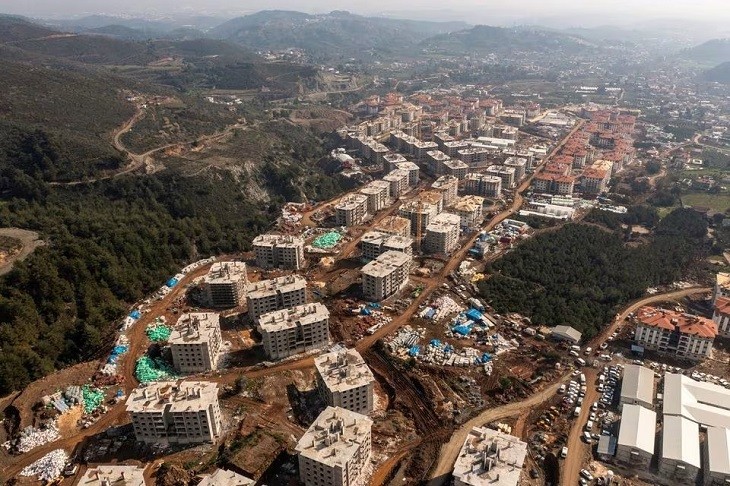(VOVWORLD) -One year after the terrible earthquake on February 6, 2023, which claimed more than 53,000 lives in Turkey, hundreds of thousands of people are still living in tents and containers. It’s been very hard for them to recover from the quake and rebuild their lives.
 Mesut Hancer holds the hand of his daughter trapped under the rubble after an earthquake in Turkey on February 7, 2023. (Photo: AFP) Mesut Hancer holds the hand of his daughter trapped under the rubble after an earthquake in Turkey on February 7, 2023. (Photo: AFP) |
Two earthquakes of magnitude 7.8 and 7.5 devastated the southern provinces of Turkey along the Syria border. The two strongest earthquakes in Turkey in nearly a century destroyed hundreds of thousands of homes and killed more than 53,000 people, and many more are still missing.
Painful memories
Tens of thousands of families in Turkey still live with constant fear and the pain of losing relatives. In Narlica city, thousands of families live in containers or huts along the road rather than return to their old house, although many houses are still livable.
Fatma Kirici, a survivor of last year's earthquake, says she lost one child. “I lost my daughter who was 20 years old. She had been married for 45 days. We can’t go back home since I lost my daughter. Our home is only slightly damaged, but we’re afraid.”
The earthquake also destroyed many people's faith in the future. Many families still don’t know how they will be able to rebuild their lives. Cevdet Donmez, a resident of Antakya city, said: “I have no expectations of life anymore. There is hope so long as we’re alive but we lost everything we had in a moment. How do we get back on our feet again? How do we provide a good future for our children? We don’t know anymore."
To commemorate the victims and revive the spirits of the survivors, activities have been held in recent days. In Hatay province, one of the areas most severely damaged by the earthquake, thousands of people on Monday held a ceremony called "The last beautiful day of Hatay" to recall the beauty of Hatay province and its capital Antakya before the devastating earthquake.
The Turkish government organized a series of memorial events across the country on Tuesday. President Recep Tayip Erdogan visited Kahramanmaras city, the epicenter of the earthquake, to oversee the construction of new housing and host the memorial ceremony. He will inspect many other cities this week.
Opposition parties have temporarily put aside their disagreements with the ruling government to attend memorial activities in Hatay, Gaziantep, and Kahramanmaras. However, for security reasons, some localities, such as Malatya, have limited such crowded memorial events.
 New residential buildings are being built for people made home less in Hatay province, Turkey. (Photo: Reuters/ Umit Bektas February 2, 2024) New residential buildings are being built for people made home less in Hatay province, Turkey. (Photo: Reuters/ Umit Bektas February 2, 2024) |
Speeding up construction
The biggest concern in Turkey is building resettlement houses for people made homeless by the earthquake. The Ministry of Environment and Urban Affairs says 680,000 houses were destroyed or severely damaged, making hundreds of thousands homeless. The Turkish Emergency Relief Agency says 689,000 people are living in containers or tents.
Construction of new houses is hampered by a lack of money and new, tighter safety regulations. At a ceremony on February 2 to hand over 7,200 houses to people in Hatay province, President Erdogan said the government will honor the commitment it made immediately after the earthquake to build 319,000 houses by this month and 680,000 houses by early 2025.
“We will complete the delivery of 75,000 houses throughout the earthquake zone within two months. We aim to provide 15,000 to 20,000 residences and village houses each month, delivering 200,000 houses by the end of the year, and we promise to complete construction within a year of the groundbreaking," Erdogan said.
Observers say the construction of new houses in Turkey will accelerate now because the local administrations are under the pressure of elections scheduled for March 31. Prosecutions for liability of construction contractors, real estate companies, and officials in many places will also be stepped up, as one of the main causes of the earthquake damage was the poor quality of the buildings.